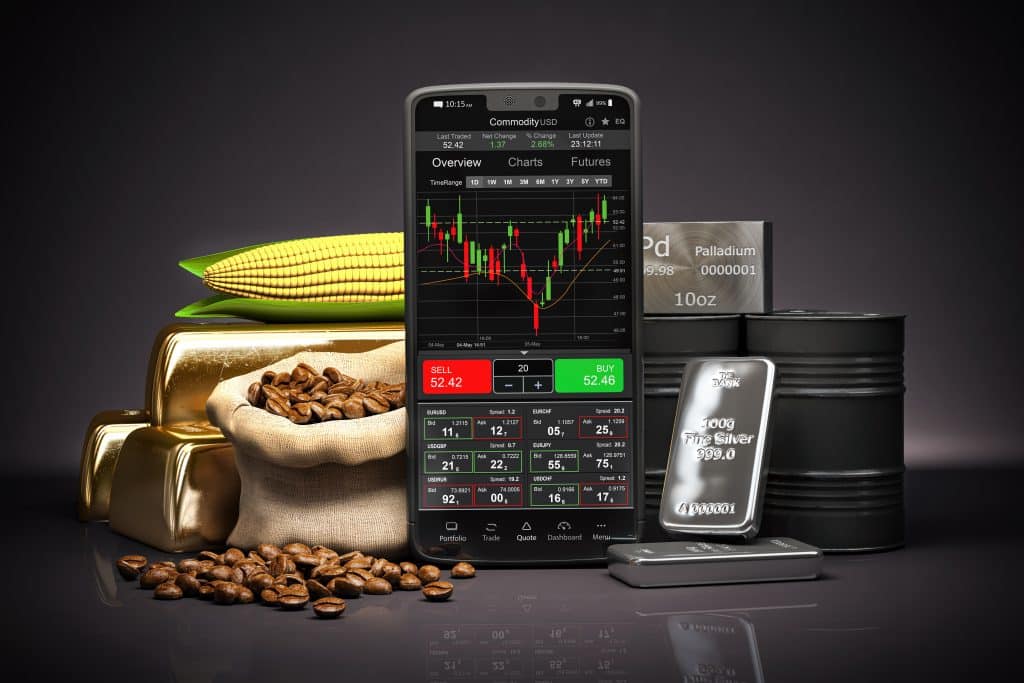Understanding Delta and Gamma
The Art of Options Trading
Options trading, a sophisticated yet intriguing aspect of financial markets, offers unique opportunities for savvy investors. At its core, understanding the nuances of Delta and Gamma in options is crucial. This comprehensive guide aims to demystify these concepts, providing you with the knowledge to navigate the options market with confidence.
Understanding Delta in Options: The Movement Maestro
Delta: The First Step in Options Strategy
Delta, in the realm of options trading, is more than just a Greek letter; it’s the rate at which the price of an option moves relative to the underlying asset. Understanding Delta is akin to mastering the rhythm of the market’s dance.
The Dynamic Nature of Delta
Delta is not static; it’s a dynamic figure that changes with market conditions. This section explores how Delta evolves and what these changes signify for your options strategy.
Delta and Market Sentiment
Delta can be an indicator of market sentiment. A high Delta might suggest a bullish outlook, while a low Delta could hint at bearish trends. Here, we delve into interpreting Delta in the context of market moods.
Gamma: The Curve Bender in Options Trading
Gamma: Understanding the Rate of Change
While Delta tells us about the rate of change, Gamma goes a step further. It measures the rate of change of Delta itself, offering insights into the acceleration of an option’s price movement.
Strategic Implications of Gamma
Gamma’s role in shaping risk and reward in options strategies is pivotal. This section explores how Gamma influences your positions and how to use it to your advantage.
Balancing Delta and Gamma
Balancing Delta and Gamma is an art. This part of the guide focuses on achieving the right equilibrium between these two metrics for optimal trading outcomes.
Practical Applications: Delta and Gamma in Action
Case Studies: Delta and Gamma at Work
Real-world examples bring to life the concepts of Delta and Gamma. This section includes case studies illustrating how these metrics play out in different market scenarios.
Delta-Gamma Hedging: A Risk Management Tool
Delta-Gamma hedging is a sophisticated risk management strategy. Here, we explain how to use these metrics to hedge your positions effectively.
The Impact of Volatility on Delta and Gamma
Market volatility significantly impacts Delta and Gamma. This part discusses how to adapt your strategies in volatile markets by understanding these changes.
Advanced Concepts: Beyond the Basics of Delta and Gamma
The Greeks: A Comprehensive View
Delta and Gamma are just part of the ‘Greeks’ in options trading. This section provides an overview of other Greeks like Theta and Vega, and how they interplay with Delta and Gamma.
Options Pricing Models: The Role of Delta and Gamma
Understanding options pricing models is crucial, and Delta and Gamma are key components. Here, we explore how these metrics fit into popular models like Black-Scholes.
Delta-Neutral Trading: Mastering Market Neutrality
Delta-neutral trading aims for a position where Delta is zero, meaning the strategy is immune to small price movements in the underlying asset. This section delves into achieving and maintaining a Delta-neutral position.
Understanding Delta and Gamma in Options: The Heart of Options Trading
The Interplay Between Delta and Gamma
Understanding the interplay between Delta and Gamma is essential for any options
trader. This section delves into how these two metrics work together to shape the risk and potential of your options portfolio.
Adjusting Strategies Based on Delta and Gamma
As market conditions shift, so should your strategies. This part focuses on adjusting your approach in response to changes in Delta and Gamma, ensuring your trading remains agile and effective.
Predicting Market Moves with Delta and Gamma
Delta and Gamma can be powerful predictors of market movements. Here, we discuss how to interpret these indicators to anticipate and capitalize on market trends.
Risk Management: Navigating Uncertainty with Delta and Gamma
Mitigating Risks with Delta and Gamma Insights
Effective risk management is crucial in options trading. This section explores how understanding Delta and Gamma can help mitigate potential losses and protect your investments.
The Role of Delta and Gamma in Portfolio Diversification
Diversification is a key strategy in managing investment risk. Learn how Delta and Gamma analysis can guide you in creating a diversified portfolio that balances risk and reward.
Limitations of Delta and Gamma in Risk Assessment
While Delta and Gamma are powerful tools, they have limitations. This part addresses these constraints and how to account for them in your risk management strategy.
Market Trends: Delta and Gamma as Predictive Tools
Historical Analysis: Learning from Past Market Behaviors
Analyzing historical market data through the lens of Delta and Gamma can provide valuable insights. This section covers how past trends can inform future trading decisions.
Predicting Volatility with Delta and Gamma
Volatility is a critical factor in options trading. Here, we discuss how Delta and Gamma can be used to predict and prepare for market volatility.
Adapting to Market Shifts: A Delta and Gamma Approach
Markets are ever-changing, and adaptability is key. This part focuses on using Delta and Gamma to adjust your strategies in response to market shifts.
Delta and Gamma in Various Market Conditions
Bull Markets: Leveraging Delta and Gamma
In bull markets, Delta and Gamma play specific roles. This section explores strategies for maximizing gains in a rising market using these metrics.
Bear Markets: Defensive Strategies with Delta and Gamma
Conversely, in bear markets, different approaches are needed. Learn how to use Delta and Gamma to protect your portfolio during market downturns.
Sideways Markets: Finding Opportunities with Delta and Gamma
Even in sideways markets, where prices are relatively stable, Delta and Gamma can uncover trading opportunities. This part discusses strategies for these market conditions.
Frequently Asked Questions
- How does Delta affect my options trading strategy? Delta measures how much an option’s price is expected to move per one dollar change in the underlying asset. A high Delta means the option is more sensitive to changes in the underlying asset’s price. For call options, a Delta close to 1 suggests the option will move almost dollar-for-dollar with the stock, while a Delta near 0 indicates minimal movement. For puts, a negative Delta closer to -1 indicates a strong inverse relationship with the stock price. Understanding Delta helps in selecting the right options based on your market outlook and risk tolerance.
- Can Gamma predict market turns? Gamma itself doesn’t predict market turns, but it indicates the stability of an option’s Delta. A high Gamma means that Delta is highly sensitive to changes in the underlying asset’s price, which can signal increased potential for rapid price movements. Traders often monitor Gamma to anticipate changes in market volatility and adjust their strategies accordingly. However, it’s important to use Gamma in conjunction with other indicators and market analysis for more accurate predictions.
- What is the best way to balance Delta and Gamma in a volatile market? In a volatile market, balancing Delta and Gamma involves managing the sensitivity and stability of your options portfolio. A common strategy is Delta hedging, which aims to make a portfolio Delta-neutral, reducing sensitivity to small price movements. Additionally, paying attention to Gamma helps in understanding how Delta might change with market movements. Traders might also use Gamma hedging to stabilize Delta, especially in fast-moving markets. The key is to continuously monitor and adjust your positions as market conditions change.
- How do Delta and Gamma interact with other Greeks like Theta and Vega? Delta, Gamma, Theta, and Vega are all interrelated. Theta measures the time decay of an option, and its effect can be more pronounced when Delta and Gamma are high. Vega measures sensitivity to volatility; a high Vega in conjunction with a high Gamma can lead to significant price swings in an option’s value. Understanding the interaction among these Greeks is crucial for comprehensive risk management and strategy development in options trading.
- What are the common misconceptions about Delta and Gamma in options trading? A common misconception is that a high Delta always indicates a profitable option. While a high Delta can mean more potential for profit, it also comes with higher risk. Another misconception is that Gamma is only relevant for short-term traders. In reality, Gamma’s impact on Delta’s stability is crucial for long-term position management as well. Lastly, some traders mistakenly view these Greeks in isolation, not considering how they interact with each other and with overall market conditions.
- How can beginners best learn to use Delta and Gamma in their trading? Beginners should start by understanding the basic concepts of Delta and Gamma and how they relate to options pricing. Practical experience is also key; starting with paper trading or small positions can help beginners get a feel for how these Greeks behave in real market conditions. Additionally, educational resources like books, online courses, and seminars can provide valuable insights. Seeking guidance from experienced traders or mentors can also accelerate the learning process. Most importantly, continuous learning and staying updated with market trends are essential for effectively using Delta and Gamma in options trading.
Conclusion: Mastering Delta and Gamma for Trading Success
In conclusion, understanding Delta and Gamma in options trading is not just about grasping complex financial concepts; it’s about applying this knowledge to make informed, strategic decisions. By mastering these metrics, traders can enhance their market insight, refine their strategies, and navigate the options market with greater confidence and success.

About The Author:
Billy Ribeiro is a renowned name in the world of financial trading, particularly for his exceptional skills in options day trading and swing trading. His unique ability to interpret price action has catapulted him to global fame, earning him the recognition of being one of the finest price action readers worldwide. His deep comprehension of the nuances of the market, coupled with his unparalleled trading acumen, are widely regarded as second to none.
Connect with us:




